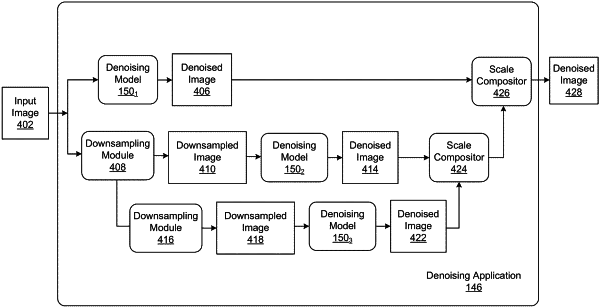| CPC G06T 5/70 (2024.01) [G06T 5/50 (2013.01); G06T 2207/20081 (2013.01); G06T 2207/20084 (2013.01); G06T 2207/20221 (2013.01)] | 17 Claims |

|
1. A computer-implemented method for denoising an image, the method comprising:
processing the image using a plurality of first denoisers to generate a plurality of first denoised images, wherein each first denoiser included in the plurality of first denoisers is trained to denoise a set of images associated with a different set of noise parameters;
processing the image and the plurality of first denoised images using a second denoiser, into which the image and the plurality of first denoised images are input, to generate a second denoised image, wherein the second denoiser is trained to denoise an additional set of images that includes one or more images from each set of images used to train a corresponding first denoiser included in the plurality of first denoisers;
downsampling the image to generate a downsampled image;
processing the downsampled image using the plurality of first denoisers to generate a plurality of third denoised images;
processing the downsampled image and the plurality of third denoised images using the second denoiser, into which the downsampled image and the plurality of third denoised images are input, to generate a fourth denoised image; and
combining the second denoised image and the fourth denoised image to produce a first blended image, wherein the second denoised image and the fourth denoised image are combined using a scale compositor that receives the second denoised image and the fourth denoised image as input and outputs the first blended image.
|